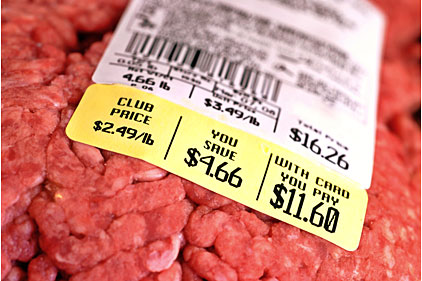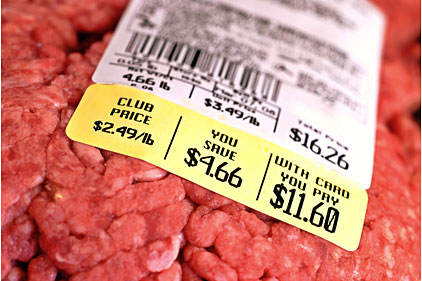 Weighingand labeling technology has become so much more than the name implies. It has become a crucial element to help meat processors monitor and manage production flow.
Weighingand labeling technology has become so much more than the name implies. It has become a crucial element to help meat processors monitor and manage production flow.
Being avid believers in the adage, you can’t manage what you can’t measure, processors demand real-time facts enabling more efficient use of machines and people in order to affect their cost of ownership. More and more, these tools for overall equipment effectiveness (OEE) serve vital functions and allow processors to see inefficiencies and address them before they slow production or, in the worst case, stop it. Even the fundamental expectation — the ability to weigh accurately to smaller tolerances — has improved to the point where the margin of error can be as low as 0.02 of a pound, according to a source.
In an era of seemingly more product recalls, labels that read accurately are all-important. Today’s weighing and labeling equipment can validate that package labels are scannable and verify that integrity before the product is packed into cartons. The case labels on those same cartons can also be validated prior to entering the distribution channel.
This, too, is good for retailers because they can be more confident that labels are readable and carry the correct information, and retailers can better ensure the traceability of the products received.
Weighing and labeling OEMs can face a real challenge helping processors sort through and understand what’s critical from the flood of data their machines generate. This abundance of information is actually helpful to both parties.
Processors want to monitor their process step by step. In real-time, they want to measure how equipment is performing and see where improvements can be made to their product flow. For example, some key metrics are idle time on a machine, average speed, and speed by product type, total pounds, and total trays through the machine. Instant feedback from the machines obviously helps production management address the here and now on the plant floor, but senior managers looking at big-picture solutions for continual improvement can tap into information, too.
Suppliers can provide a central database for them to review real-time information or analyze trend data from their office computers. For the OEMs, the same dynamic holds true. By analyzing this same performance data, they get invaluable insights into trends that can lead to design and functional improvements.
In a time where more and more processors require common systems and seamless integration, weighing and labeling systems are doing more than accepting or rejecting over-unders. They are crucial front-line participants in cost containment, production efficiency, process improvement, product traceability and more. What’s next?





Report Abusive Comment